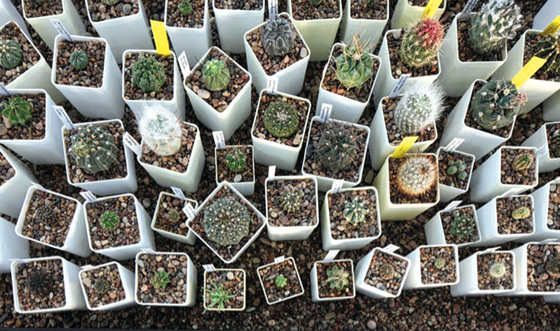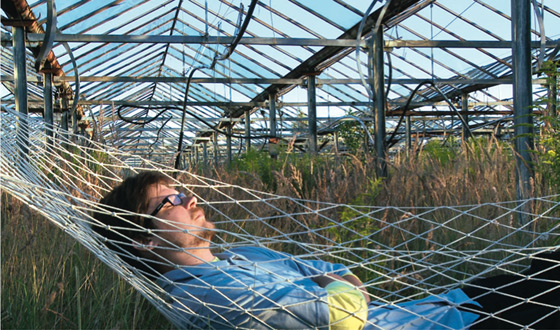|
|
| All cacti are succulents, but not all succulents are cacti Līga Marcinkeviča, Artist | |
| Almost all of us have a notebook. i use several of them at once, to say nothing of the ones that have already been filled up.... it’s true that everybody uses notebooks in a different way. some people use them to write to-do lists (the kinds of notes that create anxiety and a sense of inferiority and are sometimes the only evidence of our failed intentions, about which nobody would ever have found out if it weren’t for those notes). Other people are in the habit of jotting down the birthday dates of their friends and relatives, with a gift list in the opposite column (might this be a way to give the right gift? well, i wouldn’t be so sure!). artists’ notepads contain artwork ideas that nobody will possibly ever learn about, or a sketch here and there that will possibly never become a piece of artwork, or only a short, clipped sentence that, for an artist, is like a key to a new work. i also write down works of art. i do! i note not only the artist’s name and the title of the work but also key words that could help me recall sensations and impressions i had when looking at the artwork. of course, i jot down only the works of art i like and, till now, have never analysed exactly why i like them. Maybe because the year is drawing to a close, maybe because i want to give this issue a personal touch, i skimmed through my notebook looking for notes on the works of art from this year that i liked and that were made by latvian artists. it appeared that not very many entries met those criteria. however, one work of art stood out – a work by Ģirts korps titled Ainava (Landscape, video, 16 min., shot from may 23rd to september 3rd, screened at rixc media space in an exhibition titled Aspena–Ķemeri (aspen–kemmern), made in partnership with katrīna teivāne-korpa, sound produced by Antireality). I wanted to hear a second opinion about this work. so i invited jānis taurens, one the curators of the Aspena–Ķemeri exhibition (a curator’s comments sometimes help to discover new aspects in a work of art and see it from a fresh perspective), and my friend and like-minded artist mārtiņš ratniks as interlocutors for my “critics’ hour”. our conversation lasted for 45 minutes. Līga Marcinkeviča: I have invited you to this meeting so that we could talk about Ģirts korps’ work of art Ainava (landscape). the artist himself did not wish to speak about his work, but he gave me this video, which i watched a number of times and delved deeply into an array of nuance. for instance, the wood sorrel re-grows twice over the four months depicted in the video. this video by Ģirts is very attractive in aesthetic terms, harmonious and, i must admit, also dramatic. it begins with cacti neatly arranged in a deciduous forest, an environment not typical for cacti to grow in. the set-up remains unchanged; it is only recorded on film, featuring the life of the “companions” around the cacti. the final sequences of the video clearly show the changes in the set-up: wild boars have walked straight across the scene, waters have flooded over it, some of the cacti have blossomed, another is just about to do so. one of the plot lines i cannot help thinking about is decay, disintegration, entropy. because the ready-made, proper set-up – the landscape cultivated by the artist – disintegrates unless the artist deliberately and persistently maintains it in the long term. Mārtiņš Ratniks: Life is the only form of matter that’s known to organise itself against entropy, the sequence in which the images have been arranged does not matter. no, it definitely has an aesthetic significance, but it is of no importance in terms of context. Jānis Taurens: I would also not say that the initial frame of the video is something ready. it is this version of Landscape shown in september that forms an element, a complete part of an open structure, because the process of filming the cacti is still in progress. M.R.: This work is more a record of an idea, a documentation of a landscape. i do not see it as a finished, complete work. i embraced the potential ideas in the work. of course, i don’t know exactly what Ģirts meant by it, but in any case it made me think. L.M.: And what did you think about? M.R.: I don’t know whether my musings matter. this work is straightforward, transparent and has nothing hidden or encrypted. but, if speak i must.... it seems that all my thoughts revolve around the idea of “not fitting in”. in this work, this is illustrated by plants. seeing as i know the artist, it appears that i understand him to a certain extent. and it seems to me that all of this also concerns us humans – this ever-present sense of not fitting in. so this is... J.T.: ...a work about us. M.R.: Yes, and not simply about cacti. J.T.: I don’t see it the way that the beginning – putting the cacti in an alien environment – is a complete thing, and then something happens. it’s like when you plant a tree – you cannot speak of that as a result. you watch the tree take root and change. what happens to the cacti, it’s a process and development. | |
 Ģirts Korps. Cacti. View from the Aspen–Kemmern exhibition at kim? contemporary art centre. 2014 Photo: Ansis Starks Publicity photo Courtesy of the artist group and kim? Contemporary Art Centre | |
| M.R.: It’s independent of the artist. all cacti outside south america or southern north america have been moved and spread by people. i did some research – their classification is still not fully clear. there are lots of unexplored secrets about cacti. Building upon my original idea about not fitting in, not belonging to a place, and attributing this to human society with its psychological problems – did you know that cacti have a remarkable biological structure? in most species, their outer shell is built to safeguard a hermetic inner core. unlike other plants, cacti breathe at night, then close off and, in daytime and under sunlight, cease breathing and process what has been ingested. J.T.: Something like leibniz’s monads.... M.R.: Cacti live a very secluded life. a very long and slow life. the way that Ģirts has built his work – it is a sequence of images, accelerated and arranged in more or less chronological order – also makes one think of time and decay. You, līga, began by saying that you liked the work. but it’s obvious to me that you like it because you understand the language of that particular piece of art. that’s the reason for liking it. J.T.: That’s only a condition – you understand the language, but you might not like what’s been created in that language, right? it’s like with a verbal language – we understand one language and not another, but something that we understand might not appeal to us. M.R.: Well, yes. such a probability also exists, of course. J.T.: Still, it could as well be different with an art language; the analogy there is not so direct – once you understand it, you like it. M.R.: Yes, that would be more accurate in this case. it’s a language that makes an emotional impact when it’s used. it ensnares. J.T.: In this case, is the image not the language? the photograph, the cacti, the sequence of images and the overlaid sound – these are the elements of the language that Ģirts is using. this artwork does not consist of reference objects; still, it has its own language, and we understand it, and we like it. in this case, liking comes through understanding. M.R.: In this case, understanding the work also includes the non-existence or absence of an in-depth comment from the artist. J.T.: In my opinion, it should be clear from a work of art – the artist is either using text and it’s a part of the artwork, or he’s not using text and, if text is not a part of the artwork, no explanation is needed. if it is needed, then it’s a part of the artwork in some way or another. M.R.: Nevertheless, there are many works of art where the artist, with the help of text, directs attention to a certain side fact that leads the viewer in a certain direction. J.T.: Sometimes the borders of the artwork are blurred – it calls for additional knowledge, beyond the work. at least as a possibility. ... and then Jānis taurens came up with a version that left me and Mārtiņš perplexed and shook the structure of our standpoints.... | |
 F5. The Gardener. Installation detail. 2010 Publicity photo Courtesy of the artists | |
| J.T.: All of a sudden i thought of something – speaking of Ģirts’ work of art, i remembered your, the F5 group’s, piece titled Dārznieks (the gardener). M.R.: Indeed! i hadn’t thought of that Gardener of ours, but the two works do have some connection. maybe that’s where the understanding of art comes into play. and that’s why we now liked those cacti.... L.M.: Hmm.... this could be one of those cases when you see an artwork and think that you would make it in the same manner. M.R.: Yes! i’ve had cases like this, when i see a work of art in an exhibition abroad and think that i would have made it, or wished to have made it, in exactly the same way. and not with envy or regret, but it’s with joy that i look at it. and the joy comes from the fact that you feel you are not some...cactus in the forest. J.T.: I had a similar feeling when i read italo calvino’s Invisible Cities for the first time. i told myself: this is the work i wish i would have written! L.M.: But how could we wrap up today’s conversation? M.R.: For instance, you write that all cacti are succulents, but not all succulents are cacti. J.T.: Any other quote, perhaps? L.M.: A phrase by joseph beuys about how “everyone is an artist, but only an artist knows it”. Translator into English: Sarmīte Lietuviete | |
| go back | |







